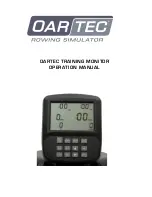
11
Unpacking and connecting
Now you're almost there!. You may have noticed that on the rear panel of your Sirius there are addi-
tional sockets. There is another 6,3mm (1/4") jack socket for a foot pedal and three MIDI sockets: IN,
OUT and THRU.
The Sirius is able to communicate with any other MIDI device via these MIDI sockets. You can for ex-
ample connect a MIDI Keyboard, a sound expander, a MIDI sequencer or a computer with Midi se-
quencing software etc.
MIDI allows you to control your Sirius from other midi devices or to control other midi devices from
your Sirius. You can also dump all the information in the Sirius' memory onto a computer where it
can then be saved onto a disk or hard drive in case the Sirius' internal memory should prove too
small for you.
An important point which is unfortunately very often misunderstood:
MIDI transmits control information only from one MIDI device to another. It does not transmit any
audio signal (sound). Should you have several devices connected to each other via MIDI you will still
have to connect the audio outputs of each device to an amplifier or mixing desk separately. You will
find more about connecting MIDI devices in the chapter called: "The Sirius and MIDI".
In addition there are two more 6,3 mm (1/4") jack sockets marked CARRIER-IN and ANALYSE-IN on
the rear panel of your Sirius. These sockets can be used to run the Vocoder of the Sirius with an ex-
ternal sound source (for example drum computer, synthesizer, sampler etc.) Either of the two sockets
can also be used to carry the trigger signal for the beat-recognition system. A detailed description can
be found in the relevant chapter of this manual.
This diagram shows you how to connect the audio section of the rear panel
of your Sirius. The two audio outputs (AUDIO-LEFT/RIGHT) are connected to
the inputs of two adjacent channels on your mixing desk . In order to keep
the stereo quality of the Sirius the pan control of these channels should be
set to opposite positions i. e. channel 1 hard left, channel 2 hard right.
Should your mixing desk consist of stereo channels, no such setting of the
panorama will be necessary.
In order to work with the beat-recognition system the signal from the CD
player has to get to the CARRIER-input or the ANALYSE-input of the Sirius.
The simplest solution is to connect the headphone output of the CD player to
the CARRIER-IN or ANALYSE-IN. This enables the Sirius to receive the trigger
signal even when the CD-player has been muted on the mixing desk. Better
mixing desks offer the possibility to send the trigger signals of the CD player
via the AUX-sends or EFFECT-sends. This connection is also recommended if
the CD-player does not have any headphone output or if you want to use a
record player (with pre-amplifier) as the trigger source.
IN
IN
IN
IN
IN
IN
IN
IN
L
R
AUX-SEND
MAIN-OUT
1
2
3
4
5
6
7
8
L
R
MIX
CD-1 02:35
CD-Player
A
UDIO
-RIGHT
A
UDIO
-LEF
T
CARRIER-IN
or
ANAL
YSE-IN
A
UX
-/EFFECT
-SEND
PHONES
R OUTPUT L
Amplifier
R Input L
Speaker
VU
VU
32 OHM
32 OHM
NATURAL
DRUMS
BASS-
SOUNDS
DIRTY
NATURAL
DIRTY
BASS
ELECTRONIC
DRUMS
PAD-
SOUNDS
909-TYPE
PLUCKED
SOUNDS
808-TYPE
LEVEL
BD
SNARE
HIHAT
PERC.
SYNTH 1
SYNTH 2
SYNTH 3
MOD.-WHEEL
ASSIGN
PART
SELECT
SOUND
SELECT
MODULATION
WHEEL
PITCH
BEND
TRACK-MUTING
PATTERN
SELECT
SONG
SELECT
PART
MUTE
PART/SEQ.
TO MIDI
PANORAMA
FX1/FX2
1
2
SNARE
HIHAT
DETUNE
FILTER-
OVERDRIVE
Q-FACTOR
VCF-EG
MACRO
VCA-EG
MACRO
MOD.-
DEPTH
MOD.-
RATE
SPECIAL-LOOP
TRACK-FADER
OVERBLAST
MOD.-
MACRO
WAVE-
MACRO
GLIDE
LPF 24 dB
RELEASE
0
32
64
96
127
LPF 12 dB
HPF 12 dB
PAGE/BANK
MASTER
VOLUME
MICROPHONE
CONNECTOR
VALUE
TEMPO
RECALL
EXIT
EDIT
WRITE
SHIFT
KEY-TRACKING
OCTAVE-UP
OCTAVE-DOWN
VCF-DYN.
VCA-DYN.
RANDOM-SOUND
PRESS BUTTON
FOR SOUND-CREATION
TAP-
TEMPO
DEMO
SYNC.
EXTERN
AUDIO
SYNC
CUTOFF
ENV.-MOD
VCA
LEVEL
PERCUSSION
PATTERN
BREAK
SPECIAL LOOP TRACKS
SYNTH 1
SYNTH 2
SYNTH 3
VOCODER
HOLD BUTTON AND
SELECT PART
ANALYSE
CARRIER
CARRIER-EXT.
MICRO.
HOLD
TO
SELECT
REW
ARPEG.
ON/OFF
START
SONG-STEP
STOP
FWD
PHONES
KICK/BD
3
4
5
6
7
8
9
10
11
12
13
14
15
16
SOLO-
SOUNDS
DRUM-SFX
EFFECT-
SOUNDS
SIRIUS
SIRIUS
by QUASIMIDI
CATEGORIES
MIXER
11 CHANNEL VOCODER
SEQUENCER
MODULATOR
OSCILLATORS
RESONANCE-FILTER
AMPLIFIER
EG-MACROS
PHONETISCHER SPEKTRAL TRANSFORMATOR
RECORD
See page 100
See pages 70, 78












































